Eyes Q&A: Eyeball inside the head + Eye motions

In my last eye article I stated that I was open for any questions about eyes in animation. And I got questions – a lot of them… Our reader Mahesh alone posted a ton of them and every single one would be worth an article. Now I’ll try to answer them, but I have to admit that I am probably not experienced enough to respond as confidently as I would like to for all of the questions. So I invite all of you to join the discussion and comment if you have any ideas or advice! Let’s get to it.
Carlio asks:
How do you make it look like the eyeball is inside the head under skin?
Well the key to this questions is to imagine that the eyelids always lay on top of the eyeball and that they are actually pretty thick. If you give them that thickness and keep in mind that the skin around the eyes squashes and stretches with eyelids (and might even show a little roundness from the eyeball) you should be able to get the right impression.
A technique that works well for me is to draw the eyelids first when I do the clean up (in the scribble phase the direction of the eyes and the right expression should have priority):
Keep in mind, that not every style calls for this. There are a couple of beautifully reduced styles that don’t need that kind of volume in the skin.
Now lets get to Mahesh’s questions. I pulled some of them together because they fit to the same topic.
What are the most common or basic things you look for in eyes (eye movements)? […] what are 4 most frequent things you see in eyes in badly animated acting scenes?
First of all: Video reference is the best thing to look at concerning eye motions – whether you are just studying it in general or filming references of a shot that you are doing. Usually we are totally unaware of our eye motions and blinks, so we need to look at it from the outside to see what we are actually doing there. So if you have the time, making and looking at video references is a great idea. (Just try to act natural if shooting reference! Don’t force it.)
An important thing to understand is how fast our eyes usually move and then stop (maybe making tiny little scan motions) and then jump to the next thing. Especially in amateur 3D animation the pupils float around weirdly.
Another common mistake that happens especially in 3D is that the eyes stay focused too long while the head moves (like when you look into a mirror and move your head). This might happen for a few seconds if a character cannot take his eyes off something, but usually the eyes lead the head movement and only stick to something for a few frames during a motion.
Have a look at this head turn – it’s pretty rough and exaggerated, because I just made it quickly for demonstration purposes.
Notice how the pupils move first in a fast jump leading the head turn motion, then jump again when they readjust as soon the object that she wants to look at comes in clear sight (this is not necessary and probably too exaggerated in this example – but it’s just to show you what you can do). And then when the head motion cushions there is a little moment where the eyes can stay focused while the head is still moving.
I already mentioned the tiny little scan motions that our pupils do. Our field of view is much smaller than we think. The picture that we “see” is actually a patchwork of many small “scans” for which the pupils move abruptly just a tiny little bit. Especially in 3D (in some 2D styles you don’t do this) this can improve your animation a lot. You can use it when a character is examining something, say searching for a hint in another character’s expression or to make an inner thinking process more vivid. Playing around with the timing and smaller and bigger jumps can really pay off.
You can intentionally not do those little eye motions for intense stares, very determined eye contact, as well as very relaxed expressions. But be careful because there is the danger that it will feel dead if your character’s eyes don’t move for too long without any good reason, especially in 3D.
In general you have to work with the timing between two eye motions to create a slow, fast, heavy or light rhythm. This rhythm is determined by what feeling you want to achieve overall and can be found in the motions of the whole body as well. Often the eyes take on the rhythm when the body comes to a stop. Break the rhythm to set accents (and check out more about rhythm here). Sometimes a well placed motionless stare is the most powerful thing you can do, and this is a great opportunity where less is a lot more.
This is pretty much everything I have in mind during my everyday work, while animating eye motions. Of course complex scenes demand research in which you will definitely find something in self-shot tests or film scenes with similar content, that you would never have thought of. So study life often!
What do you exactly look for in video reference regarding eyes? […] Do you have any recommendations for eyes?
Or some specific scenes & what should we be studying – looking while watching talented actors eyes
What are the things we should note down?
In references you look for irregularities, actions that break the rhythm, actions (or holds) that catch your attention because they indicate something meaningful in an notable, surprising or unusual way. Sometimes the way someone does a blink or stare has an interesting feeling, an intensity to it and you can try to copy that. Sometimes you notice weird twitches that you would never have planned to put into an animation. Reality is often more “daring” with those things than any plans we make in our animation theory. Often we don’t push things far enough, and reality does.
The best thing you can do after you’ve found something awesome in a reference (or just randomly watching a video) is to try to do it yourself with a basic 3D rig or a roughly scribbled animation. Often there is no time for that, so you should at least have a note book where you write down what you noticed, where and why you think it works, how it works. This way you can always check it out again later.
The question of where you have to look for reference is best answered with: Everywhere! You have enough people around you where you can notice interesting motions and reactions – not only in their eyes. Of course in films you can better stare at people’s eyes all you want without appearing like a total weirdo. Every film – no matter if live-action or animation done by decent actors/animators can be inspiration. Watching your favorite movies and actors is the most fun anyway. Everything by Disney and Pixar – awesome. Tom Hanks has great control over his eye motions and blinks, but there are many more talents. Sometimes I also like to study live-action series, because the actors build up a long term identification with their characters. “The Office” lives because of (often wonderfully awkward) pauses where people just exchange looks. Personally I can’t wait to check out Wreck it Ralph on DVD because they really used Venelope’s big child-like eyes for some amazingly timed blinks and eye motions.
How do you plan/animate eye movements with respect to head and entire body motion ?
I already mentioned above that the eyes usually lead a head motion and they often give the push for other motions before they happen (as we saw with the eye jump before Sintel’s lips open in the head turn example). If it’s a broad motion the push or dragLoose, attached parts tend to start moving with a delay and lag behind because of inertia. This is clearly visible at th... More for the head motion is most likely connected to the power center – which in some cases can also be the head (e.g. Goofy often gets pulled by his head).
If there are eye motions that you don’t want your audience to miss, you should do them after the body comes to a hold. First the strong reaction and then the meaningful blink that shows that your character just understood something or is thinking. In general it’s good advice to do one action after another, not all at once (see here for more on that).
For posing it’s interesting that a lot of expressions highly depend on the head turn/tilt and that the direction of the eyes can completely change the overall meaning – especially when the direction of the eyes and the head tilt are not in sync.
When there is a contradiction between the surface emotion of the character and a hidden subtext (you mentioned “lying” in your questions) the eyes are the place to tell the real story. A character might force his body into a pose that says (more or less) “not afraid, not nervous,” but his eyes will still look around nervously. If a character lies the eyes are not doing the occasional looking here and there thing during a conversation but reveal a more tense rapid thinking motion that also shows in more forceful head motions.
Okay, enough for this week. I hope I could answer some of your questions. If anybody has any ideas, remarks and advice please contribute to our discussion via the comments below.
In the next article of this eye series we will have a look at eye blinks.

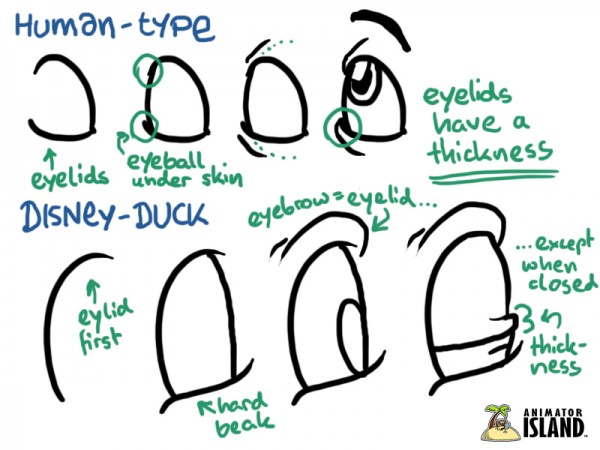


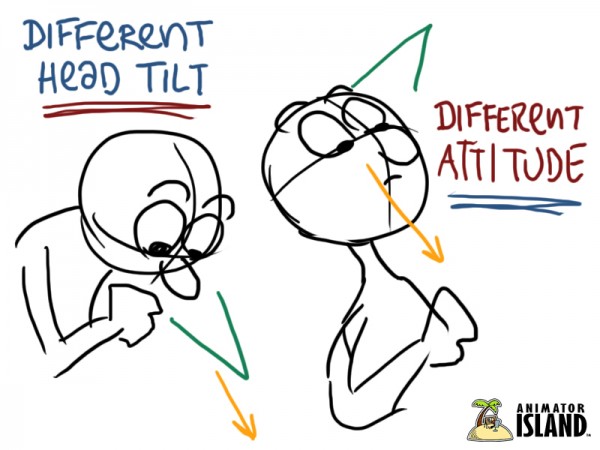
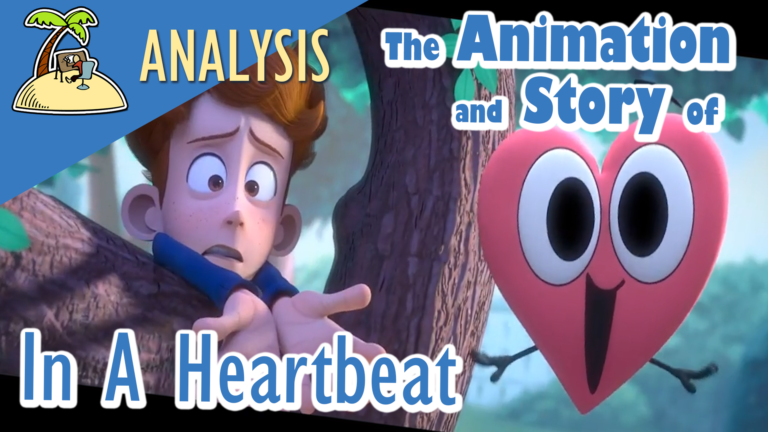


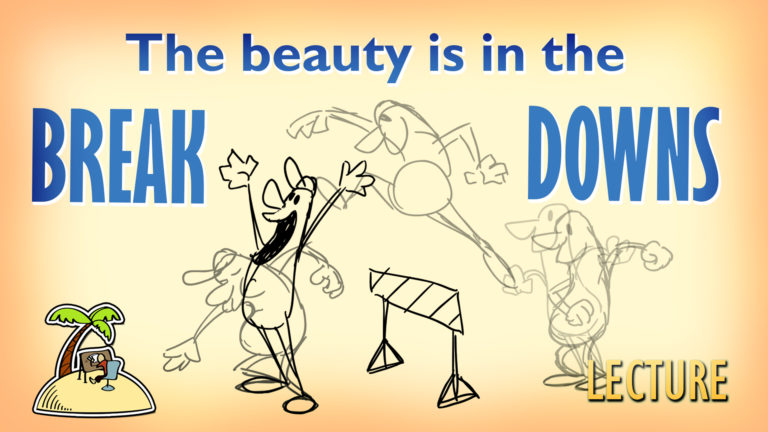
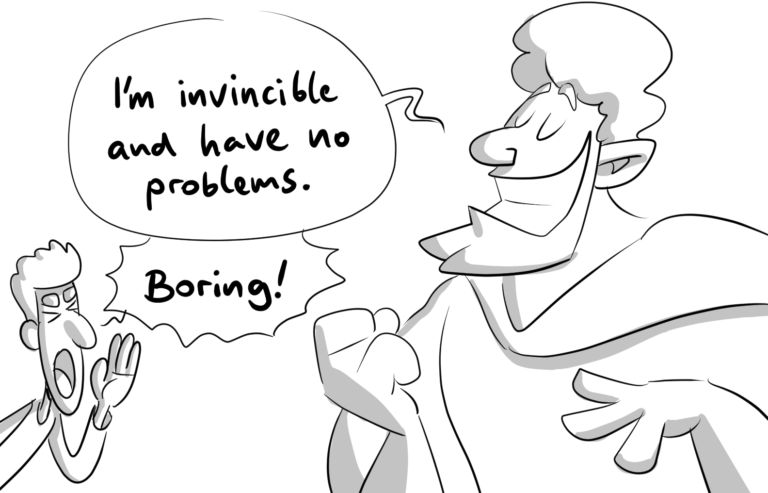
This is freaking awesome…!!! 😀 😀
this piece contains so many priceless practical things for Eye Animation..
Also that Eye Tiny Little scan motions thing is pretty cool…
I had to read and re – read the article.. like 3 – 4 times to soak in all these things…
I’m incredibly grateful that you are taking time out to make these awesome lectures… thanks again… 🙂
Desperately waiting for the Blinks ..:D:D
Very interesting article. thank you
Would be cool to have a set of example like “When to use this kind of eye movement” or whatever so it would be a handy guide. Like a PDF or JPG. Handy dandy!
That’s a good idea, mori! Thanks for the suggestion.
Very interesting stuff.
Can you do mouths next?
Good idea! Thanks for the suggestion. I will definetely do one, but for the next few weeks we have some other interesting articles…
Do you think the pupils should go off the eyeball itself cause I saw that in a book once. It was like they could go further than behind the eye.
Thank you for the animated examples! They are REALLY helpful to watch instead of just images. Please consider doing more of those!
I am glad you find it helpful. 😀 I would really love to do more animated examples, but they just take so much more time to make.
highly nice post, i really like this web-site, keep on it
Oh my goodness! an incredible post dude. Thank you
really helpful thank you
I’m still waiting 4 the next part of the eyeball series!!!!
There will be one, I promise! I have trouble finding a facial rig that I am content with – somehow I have troubles with Sintel’s eyelid controls. I plan to make some demonstration animations for this article… but that costs a lot of time.
“In the next article of this eye series we will have a look at eye blinks.”
“In the next article of this eye series we will have a look at eye blinks.”
“In the next article of this eye series we will have a look at eye blinks.”
Why must I wait! 😛
Eyes are the window to the soul! And I never get them right.